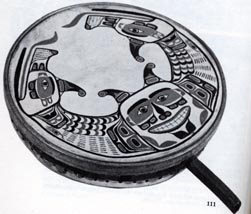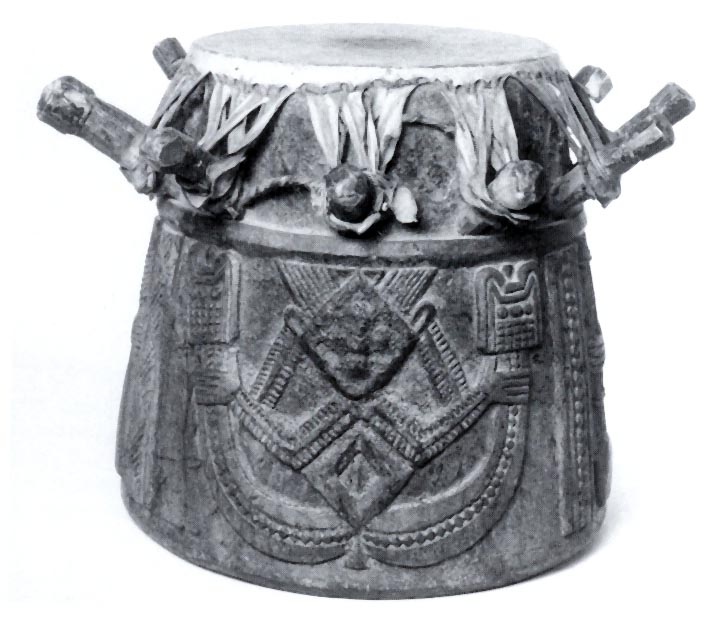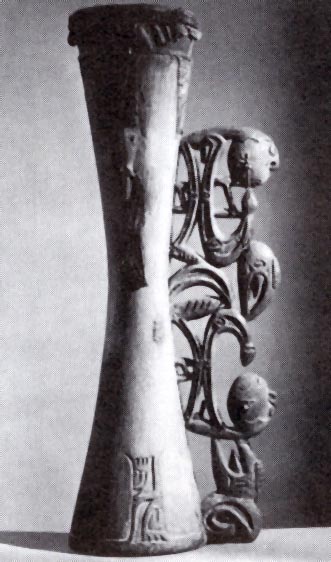Art
of Music |
||
 |
 |
 |
| Northwest Coast, Kwakiutl. Two-sided drum. Wood, animal skin. Late 19th, early 20th C. H. 15.5 in. Vancouver Centennial Museum (Picture source: Stewart p.70) The Kwakiutl use this two-sided drum in their ceremonial life. The drum displays a mythological figures on both faces. Shown is the Sisiutl, a supernatural sea serpent characterized by its two heads. It serves as a symbol of power to the Kwakiutl, particularly for its depiction of the transformation process (Stewart pp.65, 70). On its underside is a Thunderbird (not shown), a powerful symbol of leadership in Kwakiutl mythology, a crest symbol for the most high-ranking chiefs. |
Nigeria, Ijebu Yoruba. Gbedu drum. Wood and skin. Late 19th, early 20th C. H. 14.5 in. William McCarty-Cooper Collection (Picture source: Drewal, Pemberton & Abiodun, fig.143) A king or diviner uses this drum, the lead drum (iya ilu) in the Gbedu set, in ceremonial situations. The face of the iya ilu drum is considered the "face of worship," and often receives sacrificial offerings. The fish-legged figure seen on the face is referred to as Olukun, goddess of the sea. Yoruba legend tells of a Benin king who became paralyzed in the legs, and rather than risking his position and perhaps his life, he claimed that he had been possessed by Olokun. Because of this story, the mudfish, or Olukun, has become an important symbol of leadership and royalty to the Ijebu (Drewal, Pemberton & Abiodun 136). |
Indonesia, Irian Jaya-Asmat. Drum with handle. Wood with lizard skin,
fiber, shells, beads. 19th/20th C. (Picture source: Corbin p.217) The drum is used in the various ceremonies of the Asmat. The elaborate handle of the drum depicts several symbols that are indicative of Asmat ideals. The handle shows two human figures, each with an erect penis: a reference to the prowess of the warrior (an essential figure in the Asmat community). The handle also shows a bird beak pecking at one of the humans: an allusion to the practice of head-hunting. Finally, the flying fox represented in the low relief hands at the top and near the bottom of the drum, is another symbol of head- hunting (Corbin 210-211). |
| Spirits Take Form | Impact of European Culture | |
| The Costume Connection | Connections through Architecture | |
| Home | Comments on Art of Music | General Comments |